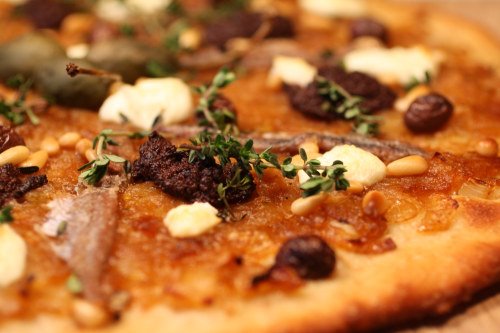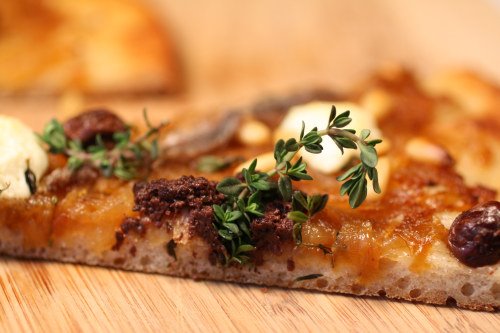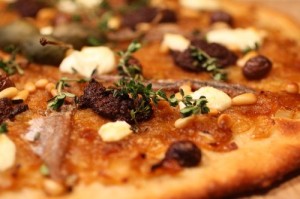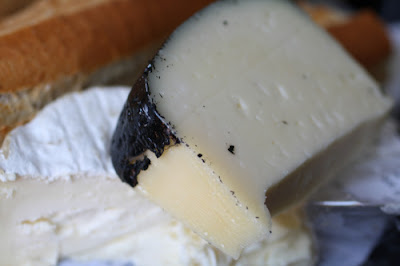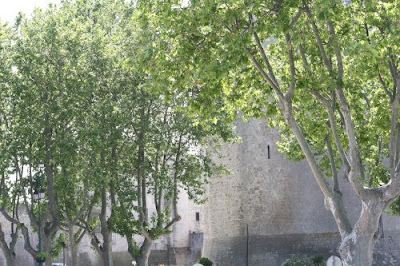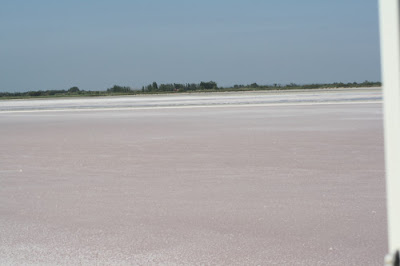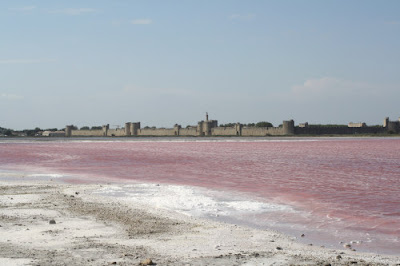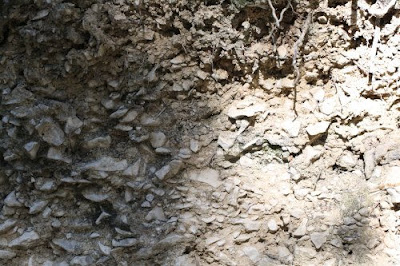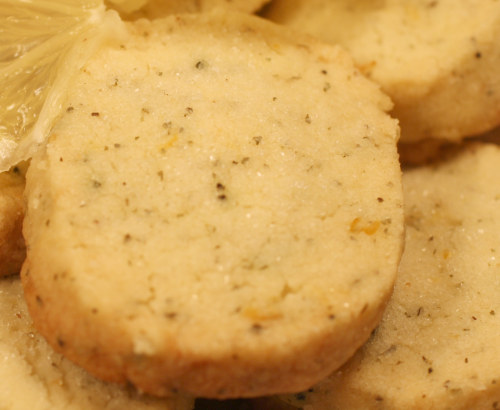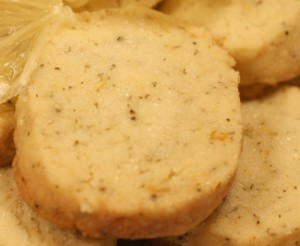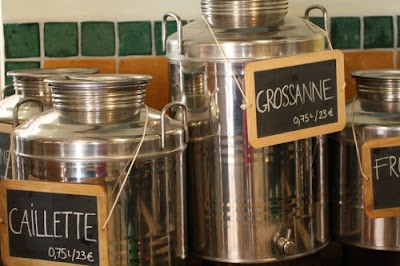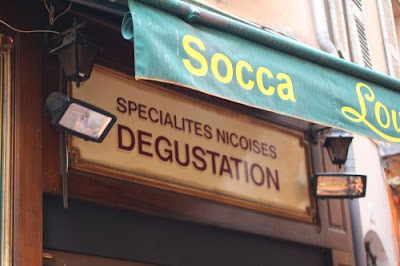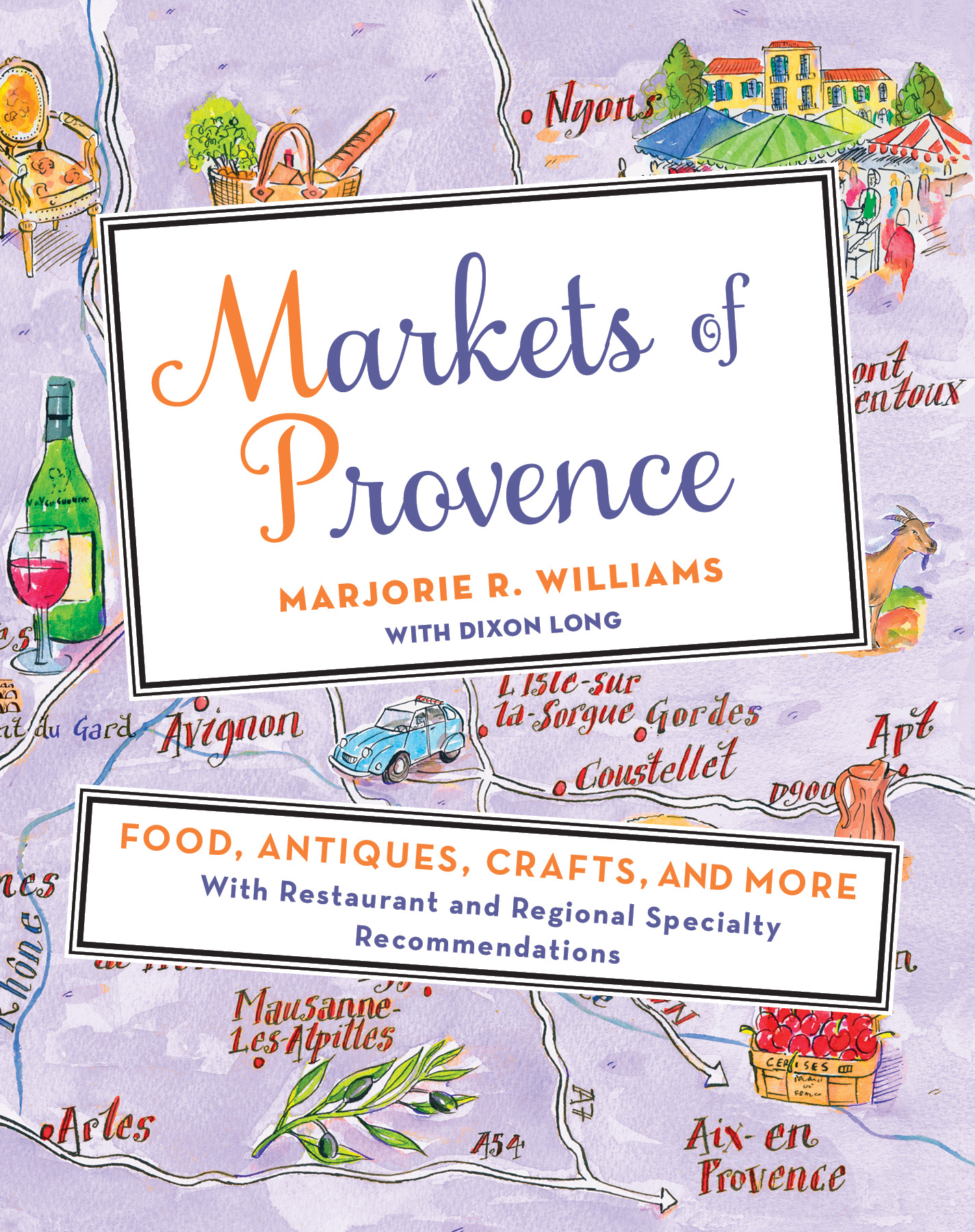Yesterday was one of those days that you plan to do what God did in six, with no rest on the seventh. Since I’m only human, all I managed was about a third of it. I wanted to go on the lavender trail. I told myself that no matter what the guidebook says, lavender must bloom somewhere in May. And we figured we’d throw in Aix-en-Provence on the way up and back for good measure.
Turns out, lavender really does bloom in July. And as for Aix, which my mother first took me too when I was fifteen, eleven years ago, and has remained in my mind as a sleepy Provence city, my ideal, it has changed. In fact it has boomed. But while it’s wobbly streets are teeming, it has a unique ability to marry Old World Provencal markets brimming with barrels of olives and the Princesse Tam Tam high end lingerie shop on the same square. It’s probably more me now than it ever has been.
Citron Presse for Breakfast
We arrived in Aix around ten o’clock. And for breakfast, there’s nothing like an enamel-endangering French citron presse. You get a tall glass about half full with fresh lemon juice, tart enough to strip the paint off your house, a carafe of water, and some sugar. Mix and mingle as you wish, and voila, your perfect citron presse.
 Citron Presse
Citron Presse
Aix Market’s the Spot
What I remember most about Aix from eleven years ago were these traditional Provencal textile shops that sell those gorgeous olive-and-floral table cloths in impossible bright pastels, and the markets that had barrels of every-flavor olive in the Mediterranean. Just in front of city hall, I found what I remembered; a true Provencal market where all the vendors talk with an accent that must to the French be like talking to Scarlett O’Hara. My favorite finds were bulot, tiny sealife escargot, gorgeous olives bathed in Provencal pistou, the requisite bouquets of sunshine zucchini flowers, and proof that even though Provence is not swathed in lavender, it is still swathed in purple: purple garlic, purple asparagus, and purple artichokes. We also bought sacks of dried lavender, herbes de Provence, and fines herbes, and came across dried rouille, the spice mix that bring to life rouille itself, that condiment of aioli and peppers and saffron served with bouillabaisse.
 Black and Green Olives with Pistou
Black and Green Olives with Pistou  Green Olives with Pistou
Green Olives with Pistou Dry Rouille, which contained dried peppers and coriander, among other things
Dry Rouille, which contained dried peppers and coriander, among other things Bulots, Escargots of the Sea
Bulots, Escargots of the Sea
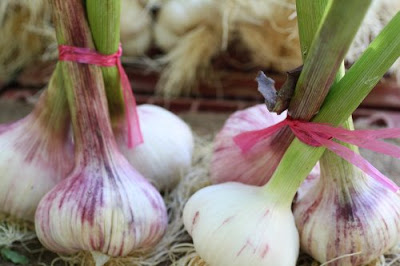 Purple Garlic
Purple Garlic
 Purple Asparagus
Purple Asparagus
 Purple Artichokes
Purple Artichokes
 An Edible Bouquet of Zucchini Flowers
An Edible Bouquet of Zucchini Flowers
Calissons and Macarons at the Aix Market
The guidebook listed an arsenal of bakeries in which to try the famed Calisson d’Aix, a cookie created centuries ago by a king who wanted to win the heart and trust of his young wife. These cookies, suggestively shaped like petals, are made from almonds and flavored with melons and oranges, although I bought some flavored with lavender. Rumor has it she eventually capitulated.
We also found and bought some macarons the likes of which I’ve never seen. In Paris, the macarons of Laduree and Pierre Herme are bright like easter eggs, and filled with cremes and confitures and ganaches. Here, they were unpretentiously undied, and unfilled. Rustic, rural, and some of the best macarons I have ever tasted. Bravo. I bought both from Calissoun.
 Piles of Unpretentious Provence Macarons
Piles of Unpretentious Provence Macarons 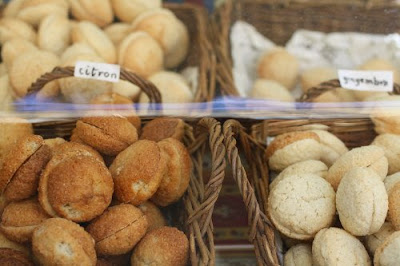 I bought the almond flavor, since macarons are made from almonds.
I bought the almond flavor, since macarons are made from almonds.
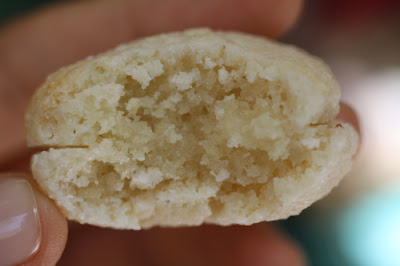 The unfilled interior of a rustic macaron.
The unfilled interior of a rustic macaron.
 Lavender Calissons
Lavender Calissons Calissons d’Aix, in Traditional, Fig, and Lavender Varieties
Calissons d’Aix, in Traditional, Fig, and Lavender Varieties
The View from the Top (of the Mountain)
We planned to drive to Sault, where great purple paths of lavender blossom every July. Halfway there, we realized we never had the time, but the journey, it seems, was the destination in itself. Far up in the mountains of Provence, the view was spectacular, and reminiscent of the plates my mother had when I was a child: rural French farmers, smiling as they tended perfect rows of lavender. Provence, the legend.
 Some views from out the car window…
Some views from out the car window…



La Ferme Gerbaud in Lourmarin
I read about a farm in Lourmarin, just about half an hour from Aix. Here, they grow herbes de Provence, naturally, without irrigation or pesticides. The owner gave us a personal tour of the property, and share old Provencal knowledge. The most important thing to remember about Provencal cuisine, the cuisine that gives us ratatouille and pissaladiere and pistou, she says, is that nothing was done originally for flavor, but rather for health. How does she mean? Savory is often added to soupe au pistou because the soup contains beans, and savory reduces flatulence. It also apparently is sexually stimulating. Rosemary was used in roasting meats because its antiseptic properties were a safeguard against stomach upset. Sage was used with pork because it natually kills worms, which have a tendency to inhabit pork. And the Provencal bouquet garni, which contains rosemary, thyme, and bay, actually is like old-fashioned Pepto Bismol. Thyme stimulates the stomach; rosemary the gallbladder; bay the intestines.
Most importantly and most interestingly, she told me that traditionally the people of Provence never ate Lavender. Now it is trendy to include it in herbes de Provence, but the true Provencal people abhor that idea as untraditional. Lavender was used and farmed solely for its essential oil, which was used in soaps and laundry and other such uses. But I stuck to my guns; lavender is delicious. And she even admitted to selling lavender navettes in the store.
 Monsieur le Goat, Guardian of the Herbes de Provence
Monsieur le Goat, Guardian of the Herbes de Provence
 Rosemary
Rosemary
 Sage
Sage
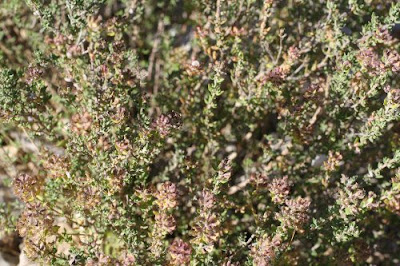 Thyme
Thyme
 Savory
Savory
 Wild Almond grows in the region. Sauce Mistral is like an almond pistou.
Wild Almond grows in the region. Sauce Mistral is like an almond pistou.
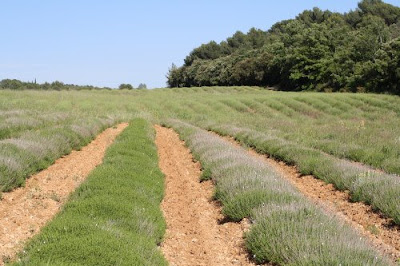 Fields of Lavender, getting ready to bloom
Fields of Lavender, getting ready to bloom
Dinner at Le Passage in Aix
For dinner, we drove back to Aix, to a restaurant called Le Passage, so called because of its adorable table-lined entrance walkway. While it wasn’t the greatest meal of my life, I was impressed by the imaginative reincarnation of Provencal ingredients. I ordered the Menu Cezanne. And here are some modern renditions of old Provence:
 A Napoleon of Eggplant, Tomato Sauce, and Chevre
A Napoleon of Eggplant, Tomato Sauce, and Chevre
 A Tarte Fine in the style of Pissaladiere
A Tarte Fine in the style of Pissaladiere
 Daube Provencal, a traditional beef stew cooking until soft in light wine
Daube Provencal, a traditional beef stew cooking until soft in light wine
 White Chocolate and Olive Oil Mousse, with Green Fennel Cookies
White Chocolate and Olive Oil Mousse, with Green Fennel Cookies


